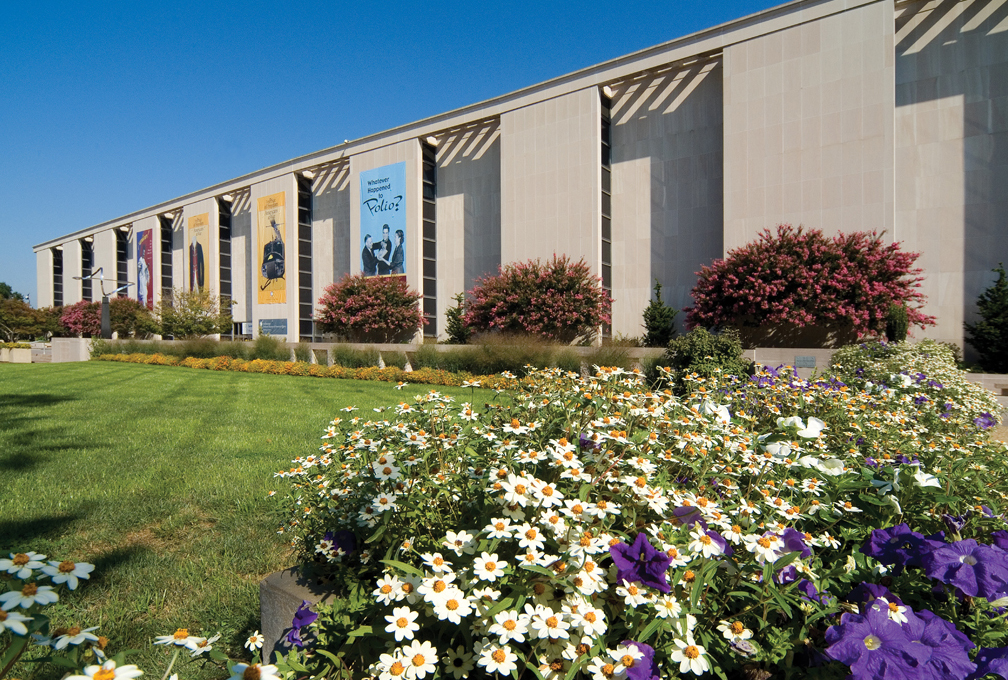“Within These Walls” Exhibition Uses Technology To Bring Stories to Life
Theatrical projections will enliven the National Museum of American History’s exhibition “Within These Walls” beginning Aug. 31. The exhibition tells 200 years of history through a partially reconstructed Georgian-style, two-and-a-half-story timber-framed house that stood from Colonial days through the mid-1960s at 16 Elm St. in Ipswich, Massachusetts, 30 miles north of Boston.
The new digital program uses animated shadows, historic images, scene-setting text and soundscapes to bring the stories of people into the rooms of the house to illustrate five featured families. As visitors walk into the gallery, it is 1765 and the British colony of Massachusetts is thriving. The prosperous Choate family is taking tea, the exotic beverage of the time and one that required knowledge of British manners. Shadow figures in period clothing appear in the Choate front parlor and tea is poured into a cup, a symbol of the era’s global marketplace.
As visitors continue along the left side of the house, they will meet Chance Bradstreet, an enslaved youth who has been “leased” from his owner by Abraham Dodge. It is now 1777 and the house’s new residents are living in the midst of the American Revolution. Chance appears at the doorway, laboring for the Dodge family as British soldiers walk alongside the house. Race-based slavery was legal in Massachusetts at this time. Though his future is not certain, Bradstreet sees that the Revolution might open a path to freedom.
Around the corner are the Caldwell’s, who lived in the house two decades before the Civil War. The projections show Lucy Caldwell as she hosts a meeting for the Ipswich Female Anti-Slavery Society. The women are seen sewing aprons and other items to sell in order to raise money for the fight against slavery. Through the stories of families such as the Dodge’s and the Caldwell’s, the new media program traces the changing times and ideas of the home’s occupants. In just a few decades, the house transforms from the home of owners who condoned slavery to a gathering place for abolitionists.
In 1885, industry in Ipswich is booming, fueled by immigrant labor. In this section, visitors will see Catherine Lynch and her daughter, Mary. These Irish immigrants are struggling to make enough money and the home is now a rental property. Catherine takes in laundry—dirty, heavy work—and rents room to boarders to make ends meet. Mary works at the hosiery mill. However, just like other immigrants who rented rooms in the house, they are laying the groundwork for future generations.
Walking to the rear of the house, visitors will see the 1940s-era kitchen. It is 1943 and the country is fighting World War II. Mary Scott and her family, the last residents of the house, are canning tomatoes from the backyard victory garden. Her daughter, Annie, comes home from working at the munitions factory. The Scott’s are an example of the way American families mobilized for the war effort.
Theatrical updates and other enhancements have been made possible by a $1.7 million gift from the National Association of Realtors, which has sponsored the exhibition since 2001 and will now serve as the sole sponsor of the exhibition through 2030. In addition to the theatrical integrations, the exhibition website is now available in eight language translations and the temporary display on the 50th anniversary of the Fair Housing Act is on view through Dec. 15, 2019. Additional programming will be offered through two hands-on educational carts, one focused on the WWII as well as a living-history presentation centered on the abolitionist story.
The project was brought to life by a collaboration between museum staff, interactive and digital media designers Bluecadet, fabricators Capitol Museum Services and exhibit designers Howard+Revis.
Through incomparable collections, rigorous research and dynamic public outreach, the National Museum of American History explores the infinite richness and complexity of American history. It is located on Constitution Avenue N.W., between 12th and 14th streets and is open daily from 10 a.m. to 5:30 p.m. (closed Dec. 25). Admission is free. For more information, visit http://americanhistory.si.edu.
###
SI-475-2018

